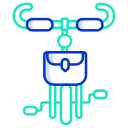Emerging Roles on Interdisciplinary Teams
Part educator, part analyst, this role bridges bedside realities and model design. Translators map clinical pathways into data features and convert model metrics into practical implications clinicians can act on confidently.
Emerging Roles on Interdisciplinary Teams
Nurses shape alert thresholds, workflow fit, and patient communication. Their insights decide whether an AI tool helps or hinders. Recognizing this expertise elevates safety, usability, and dignity in daily care.







